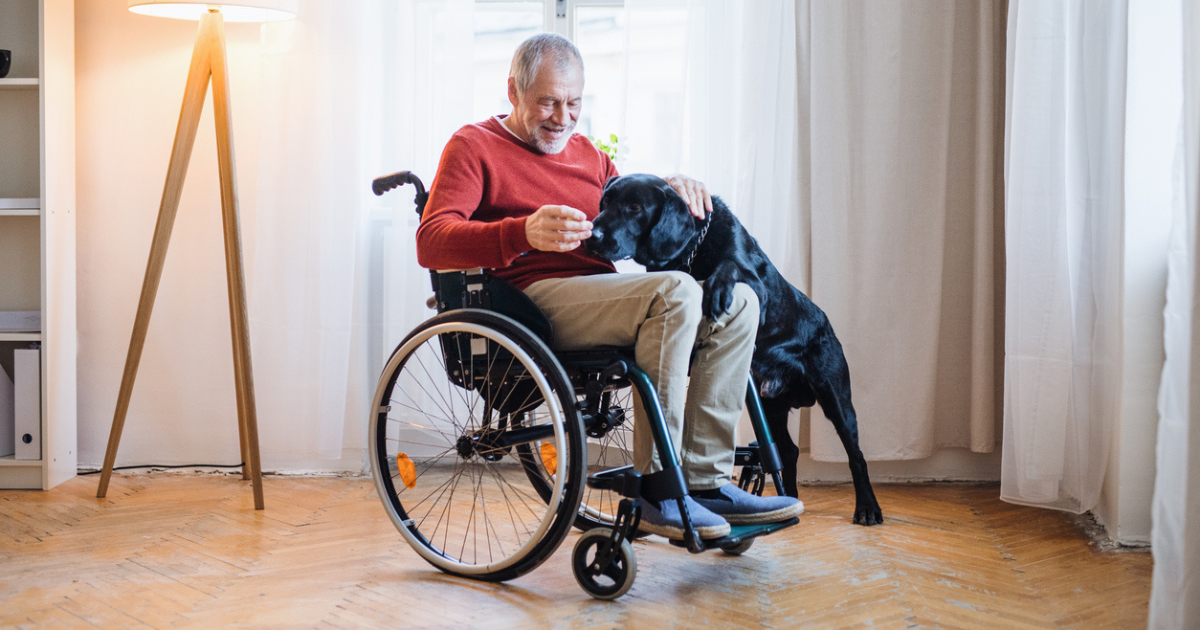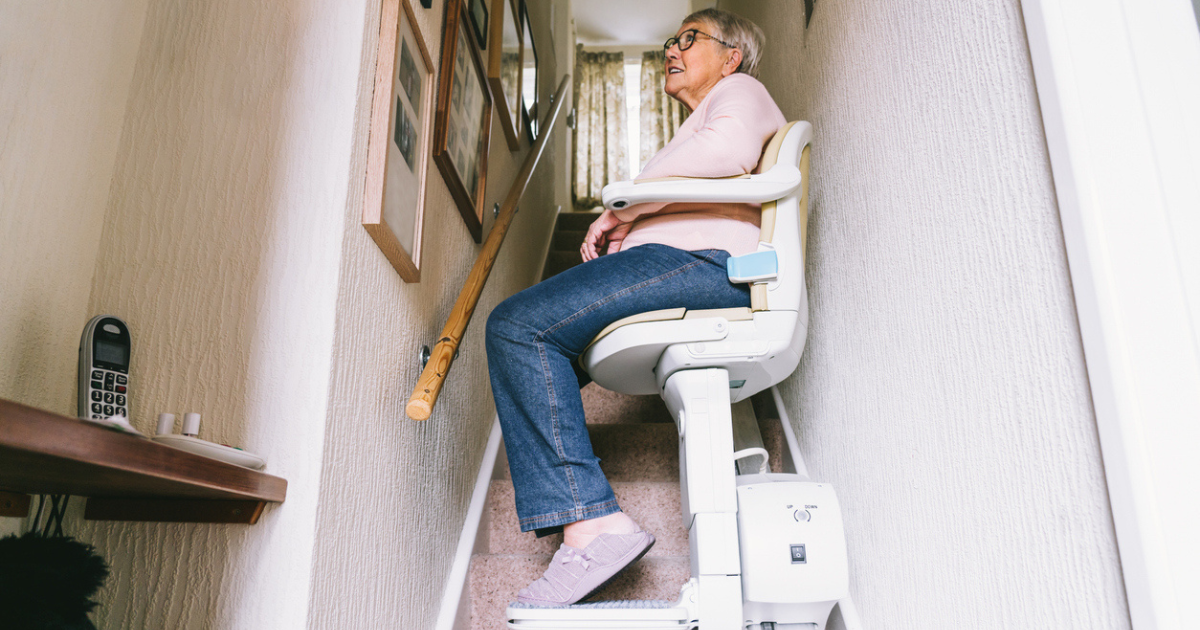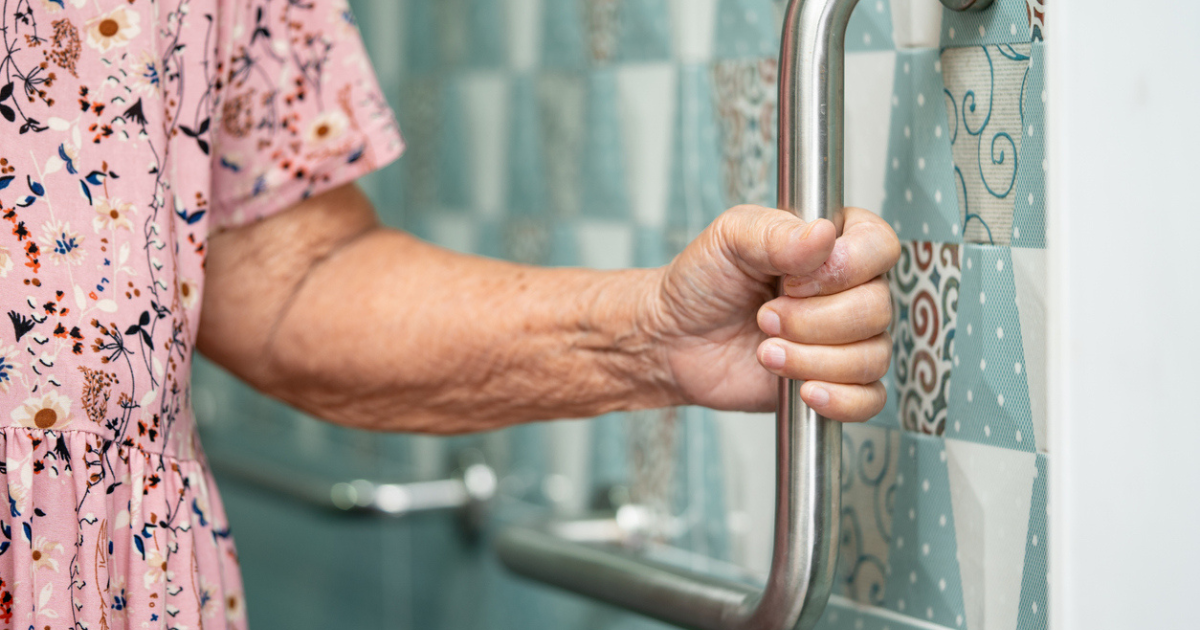
Aging in place emphasizes your ability to live independently and safely in your home as you age. This approach allows you to maintain your routines, stay connected with your community, and enjoy a familiar environment while all contributing to your overall well-being.
To achieve this, you must prepare your home for aging in place so you can live comfortably, safely, and independently.
Aging in Place Home Design
Modifying your home to suit your evolving needs can prevent accidents, reduce the risk of injuries, and support your daily activities. By thoughtfully preparing your home, you can maintain your independence longer, enjoy a higher quality of life, and thrive in the space you love.
Home modifications range from simple changes like installing grab bars in the bathroom to more extensive remodels such as widening doorways or adding ramps. The National Institute of Aging created an Aging in Place Checklist that provides questions to alert you to potential hazards in your home.
However, critical aspects of home preparation include:
- Safety enhancements: Installing grab bars, non-slip flooring, and adequate lighting to prevent falls.
- Accessibility improvements: Checking that doorways, hallways, and bathrooms are accessible for wheelchairs and walkers.
- Comfort upgrades: Adjusting furniture and fixtures to accommodate changing mobility and health conditions.
- Technological adaptations: Incorporating smart home technology for better monitoring and assistance.
- Emergency preparedness: Equipping your home with alert systems and emergency contact devices.
The benefits of home modifications are profound:
- Increase safety: Reducing the risk of falls and injuries by eliminating hazards and adding safety features.
- Improved accessibility: Making it easier for seniors with mobility issues to navigate their homes.
- Increased independence: Allowing you to perform daily activities without excessive help.
- Better health outcomes: Minimizing stress and promoting physical and mental well-being by creating a supportive environment.
- Cost savings: Often more affordable than long-term care facilities, allowing you to remain home longer.
For more information, read Aging in Place: 6 Questions to Consider.

General Home Modifications for Aging in Place
When planning modifications to your home for aging in place, consider these general modifications that boost safety, accessibility, and convenience to accommodate your evolving needs.
Entryways and Exits
Creating accessible and safe entryways and exits verifies you can easily enter and leave your home, whether you are using a wheelchair or walker or simply need additional support.
Install Ramps, Stairlifts, or Threshold Ramps
If you use a wheelchair or have difficulty navigating stairs, installing ramps, stairlifts, or threshold ramps increases accessibility.
- Ramps: Ramps constructed with a gentle slope provide easy wheelchair access to your home. They should be non-slip, sturdy, and have handrails for added safety.
- Threshold Ramps: These small ramps bridge the gap created by door thresholds, making it easier for wheelchairs and walkers to cross over.
- Stairlifts: Stairlifts offer a practical solution for multi-story homes, allowing you to move between floors without falling.
Verify Doorways are Wide Enough
Wide doorways are essential for accommodating wheelchairs and walkers.
- The recommended width is at least 32 inches for a comfortable, unobstructed passage.
If existing doorways do not meet this requirement, you may need to widen or remove doors entirely in areas where privacy is not an issue.
Add Lever-Style Door Handles
Lever-style door handles are easier to operate than traditional round knobs, especially if you have arthritis or limited hand strength. These handles require minimal effort to open and close doors, boosting accessibility throughout your home.
- Lever handles are easily installed on most doors for a practical and cost-effective modification.
Lighting
Proper lighting reduces the risk of falls, aids in daily tasks, and increases overall well-being by creating a pleasant living environment.
Upgrade Lighting Throughout Your Home
Checking that all areas of your home are well-lit is important. This includes:
- General lighting: Bright, even lighting throughout your home eliminates dark areas and shadows. Use energy-efficient LED bulbs that provide good illumination without high energy costs.
- Task lighting: Focused lighting for specific activities such as reading, cooking, and grooming can be helpful. Also, consider under-cabinet lights in your kitchen, bedside lamps with adjustable arms, and magnifying lamps for hobbies.
- Ambient lighting: Use soft lighting to create a warm and inviting atmosphere. Consider using dimmer switches to adjust light levels according to the time of day and activities.
Install Motion-Sensor Lights in Key Areas
Motion-sensor lights increase safety by automatically turning on when movement is detected. These are especially beneficial in areas such as:
- Hallways and staircases: Keeps pathways lit during nighttime trips.
- Bathrooms and kitchens: Provides immediate lighting upon entry to prevent accidents.
- Outdoor areas: Boosts security and ease of access when entering or exiting your home after dark.
Use Rocker Switches for Easier Operation
Rocker switches offer easier operation by turning on/off with a simple push. They are especially helpful if you have limited dexterity or strength.
- Install rocker switches at an accessible height so switches are within easy reach for all residents, including those using wheelchairs.
Flooring
Addressing common tripping hazards and selecting the right materials can reduce the risk of falls.
Remove Tripping Hazards
One of the first steps in making your home safer for aging in place is to eliminate potential tripping hazards:
- Loose rugs: Remove or secure loose rugs that can bunch up or slip underfoot. If rugs are necessary, use non-slip backing or double-sided tape to keep them firmly in place.
- Cords and clutter: Keep pathways clear of electrical cords, pet toys, and other items that might cause you to trip. Use cord organizers and cable covers to manage wires.
Install Non-Slip Flooring Materials
Non-slip flooring materials provide better traction and reduce the likelihood of slips and falls.
- Textured vinyl or rubber flooring: These materials offer excellent grip and are easy to clean and maintain.
- Carpet with a low pile: Choose carpets with a tight, low pile to minimize tripping and provide a softer surface in case of falls. Check that the carpet is securely fastened to avoid any loose edges.
- Non-slip tiles: In areas like bathrooms and kitchens, opt for tiles with a textured surface to prevent slipping when wet.
Verify Even Flooring Transitions Between Rooms
Smooth transitions between different flooring types or rooms prevent trips and facilitate mobility aids.
- Threshold ramps: Small threshold ramps bridge height differences between rooms, making it easier for wheelchairs and walkers to enter and exit.
- Smooth transitions: Check that transitions between carpeted areas and hard floors (such as wood or tile) are level. Avoid sudden changes in floor height, which is challenging to navigate.

Room-by-Room Modifications for Aging in Place
Adapting your home for aging in place involves making thoughtful modifications to each room so that you can continue living independently while accommodating any physical changes that come with aging.
Living Room
The living room is a central area where you spend a lot of time, so it's important to make it safe and accessible.
- Arrange furniture to create clear pathways: Create wide, unobstructed pathways that allow easy movement and enough space for wheelchairs or walkers.
- Use sturdy, stable furniture with armrests: Opt for sturdy chairs and sofas that provide solid support. Armrests are essential as they assist you in sitting down and standing up safely.
- Install reachable light switches near entrances: Place light switches at accessible heights near doorways so they can be easily reached when entering or exiting the room.
- Remove trip hazards: Remove loose rugs, cords, and clutter that pose tripping hazards. Secure any necessary rugs with non-slip backing or double-sided tape.
- Provide easy access to seating and controls: Position seating so it's easily accessible from main pathways. Check that remote controls, telephones, and other frequently used items are within reach of seating areas.
Kitchen
The kitchen is a vital area in your home that requires specific modifications to make it safe, accessible, and functional for aging in place. Here are the key changes needed to make your kitchen senior-friendly:
- Lower countertops and cabinets: Lower to an appropriate height so they are reachable from a seated position or for those with limited mobility.
- Install pull-out shelves and lazy Susans: Add these features to cabinets and pantry areas. These features make it easier to access stored items without reaching deep into cabinets.
- Provide easy access to appliances: Arrange appliances at convenient heights and locations to minimize bending, stretching, and lifting. For example, wall ovens installed at waist level and side-by-side refrigerators are more accessible.
- Clear pathways to appliances: Check that there are clear pathways to all major appliances for easy movement and maneuverability.
- Use appliances with easy-to-read controls and safety features: Choose large, easy-to-read controls and displays. Look for features such as touch controls or dials with clear markings.
- Use appliances with safety features: Prioritize appliances with built-in safety features, such as automatic shut-off functions, induction cooktops that remain cool to the touch, and microwaves with user-friendly opening mechanisms.
Bathroom
The bathroom is one of the most critical areas in your home to modify for safety and accessibility. By making thoughtful adjustments, you can significantly reduce the risk of accidents.
- Install grab bars and handrails: Install near areas such as the toilet, shower, and bathtub. These fixtures provide essential support for sitting, standing, and moving around the bathroom.
- Use non-slip mats: Place non-slip mats inside and outside the shower or bathtub to prevent slips. Additionally, using non-slip mats on the bathroom floor increases safety by providing better traction.
- Add a walk-in tub or shower: Install walk-in tubs or showers to make bathing easier and safer. These options eliminate the need to step over high bathtub edges, reducing the risk of tripping.
- Modify a walk-in shower with a bench and handheld showerhead: This allows you to sit while showering and makes it easier to rinse without excessive movement.
- Add a raised toilet seat: Install one to make it easier to sit down and stand up. This simple modification helps reduce strain on the knees and lower back.
Bedroom
By making strategic modifications, you can make your bedroom accessible and comfortable for a restful night's sleep.
- Create easy access to your bed: Arrange furniture to create clear, wide pathways around your bed for easy movement.
- Place your bed at an appropriate height: The ideal bed height generally allows the feet to rest flat on the floor when sitting on the edge of the mattress.
- Install night lights: Add along pathways to the bathroom and other key areas. Motion-sensor night lights can be particularly effective to provide light only when needed.
- Add reachable storage: Integrate storage solutions within easy reach from your bed. This includes nightstands with drawers or shelves for frequently used items like glasses, medications, and books.
- Use nightstands with rounded edges: Rounded edges minimize the risk of injury from bumps and falls.
- Install closet organizers: Features like pull-down rods, adjustable shelves, and slide-out baskets can help you reach your clothing and accessories without excessive bending or stretching.
Specialized Modifications
Incorporating specialized home modifications will increase the safety, convenience, and independence of aging in place.
Smart Home Technology
Smart home technology can increase the ease and safety of daily living.
- Voice-activated devices: Install voice-activated devices to control lights, thermostats, security systems, and other home functions. These devices allow you to adjust your environment without moving.
- Medical alert systems and fall detection sensors: Use medical alert systems that provide immediate access to emergency services at the push of a button. Fall detection sensors can automatically alert caregivers or emergency responders if a fall is detected.
For more, read Senior Check-In Services and Best Practices.
Safety and Emergency Preparedness
Preparing for emergencies is crucial for safety and peace of mind in an aging-in-place home.
- First aid kit: Set up a kit in an accessible location and keep it well-stocked with supplies like bandages, antiseptics, and medications. Regularly check and replenish the kit as needed.
- Smoke and carbon monoxide detectors: Install smoke and carbon monoxide detectors equipped with flashing lights and loud alarms to alert you if you have a hearing impairment.
- Emergency exit plan: Create a comprehensive emergency exit plan and verify all household members are familiar with it. Practice the plan so everyone can exit your home quickly and safely.
Making Aging in Place Easier
The key to successful aging in place is to start early and make gradual adjustments that meet your evolving needs. By taking proactive steps to modify your home, you can enjoy a higher quality of life, maintain your independence longer, and continue to live in the place you love.
Keystone Health is here to support you every step of the way with services designed to help you age in place comfortably and safely, like at-home primary care, in-home physical therapy, palliative care, chronic care, and more.
We are here for you every step of the way!
(We provide services to residents in East Boise, Caldwell, Emmett, and South Meridian, Idado areas.)
